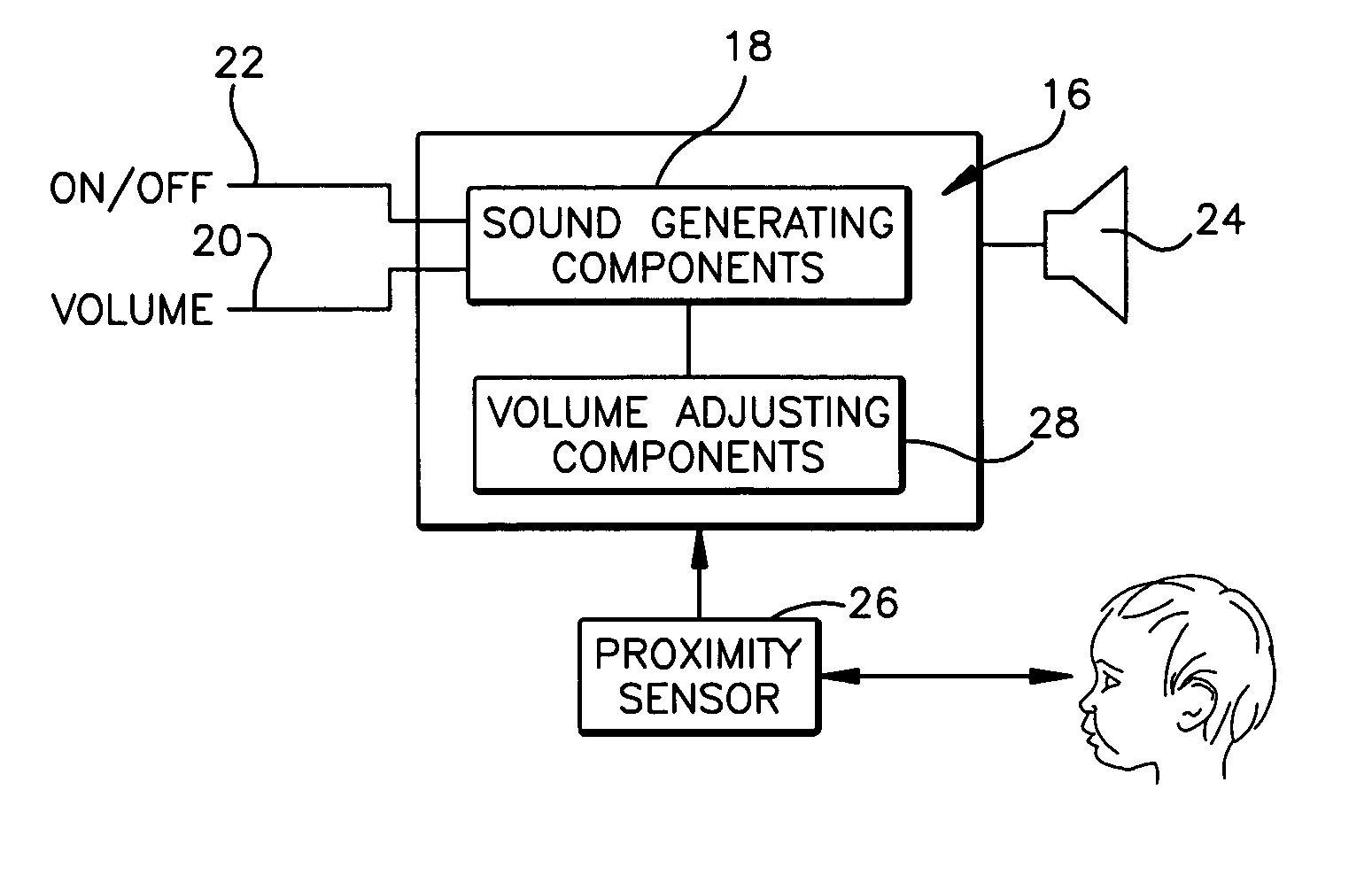Audio device
a technology of an audio device and an audio input, which is applied in the direction of transducer details, electrical transducers, electrical apparatus, etc., can solve the problems of affecting the listening experience, so as to achieve the effect of reducing the volume of the playback
- Summary
- Abstract
- Description
- Claims
- Application Information
AI Technical Summary
Benefits of technology
Problems solved by technology
Method used
Image
Examples
Embodiment Construction
[0014] Referring now to the drawings, and initially to FIGS. 1 and 2, an audio device 10 according to the present invention is shown. The illustrated audio device 10 is a radio, which is programmed to produce a primary audio-output based on wirelessly received signals and, to this end, comprises a housing 12 and an antenna 14 for receipt of such signals. As is explained in more detail below, the audio device 10 can automatically adjust its playing volume so as to prevent it from being at an unacceptable level for the listener's relative position. For example, the volume level can be adjusted if the listener moves closer to, or farther from, the audio device 10, as often happens during the use of such devices.
[0015] It should be immediately noted that the present invention can find application in a variety of other audio devices. For example, the audio device 10 could be a television which, like the illustrated radio, is programmed to produce a primary audio output based on wireless...
PUM
 Login to View More
Login to View More Abstract
Description
Claims
Application Information
 Login to View More
Login to View More - R&D
- Intellectual Property
- Life Sciences
- Materials
- Tech Scout
- Unparalleled Data Quality
- Higher Quality Content
- 60% Fewer Hallucinations
Browse by: Latest US Patents, China's latest patents, Technical Efficacy Thesaurus, Application Domain, Technology Topic, Popular Technical Reports.
© 2025 PatSnap. All rights reserved.Legal|Privacy policy|Modern Slavery Act Transparency Statement|Sitemap|About US| Contact US: help@patsnap.com



